
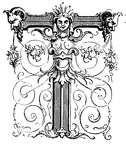 T4
T4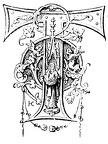 T5
T5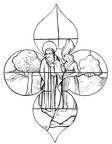 Temptation of St. Mars
Temptation of St. Mars Statue said to be of Clovis I., formerly in the porch of St. Germain-des-Prés, Pari
Statue said to be of Clovis I., formerly in the porch of St. Germain-des-Prés, Pari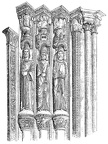 Statues in the South Porch of Bourges Cathedral
Statues in the South Porch of Bourges Cathedral Statuette of St. Avit, in the Church of Notre-Dame de Corbeil
Statuette of St. Avit, in the Church of Notre-Dame de Corbeil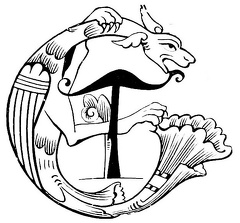 T 2
T 2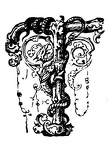 T
T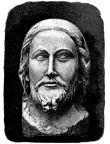 Statue of Christ in the Front of the Cathedral of Amiens
Statue of Christ in the Front of the Cathedral of Amiens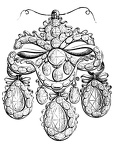 Pendant, adorned with Diamonds and Precious Stones
Pendant, adorned with Diamonds and Precious Stones Performer on the Psalterion. Fourteenth Century
Performer on the Psalterion. Fourteenth Century Plain Armour of the Fifteenth Century, about 1460
Plain Armour of the Fifteenth Century, about 1460 Player on the Vielle. Thirteenth Century
Player on the Vielle. Thirteenth Century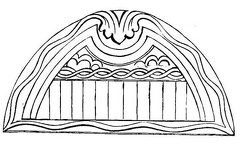 Nabulum. Ninth Century
Nabulum. Ninth Century Norman Archer
Norman Archer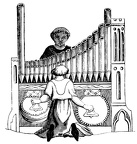 Organ with single Key-board of the Fourteenth Century
Organ with single Key-board of the Fourteenth Century Organistrum. Ninth Century
Organistrum. Ninth Century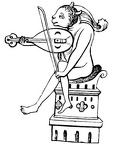 Oval Vielle with Three Strings, of the Thirteenth Century
Oval Vielle with Three Strings, of the Thirteenth Century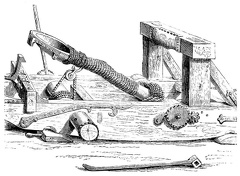 Mangonneau; an Engine of War of the Fifteenth Century
Mangonneau; an Engine of War of the Fifteenth Century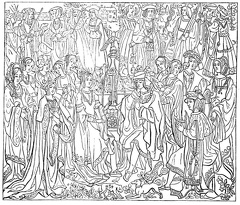 Marriage of Louis XII. and Anne of Brittany
Marriage of Louis XII. and Anne of Brittany Minstrel’s Harp, of the Fifteenth Century
Minstrel’s Harp, of the Fifteenth Century Long Monochord played on with a Bow. Fifteenth Century
Long Monochord played on with a Bow. Fifteenth Century Louise de Savoie, Duchess of Angoulême, mother of Francis I
Louise de Savoie, Duchess of Angoulême, mother of Francis I Lyre of the North. (Ninth Century.)
Lyre of the North. (Ninth Century.) King David playing on a Rote
King David playing on a Rote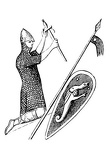 King William, as represented on his seal preserved in England
King William, as represented on his seal preserved in England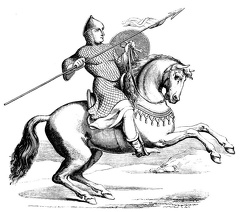 Knight in his Hauberk
Knight in his Hauberk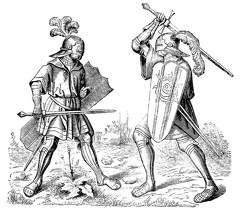 Knights in complete Armour, with the Salade
Knights in complete Armour, with the Salade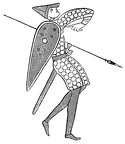 Lancer of William’s Army
Lancer of William’s Army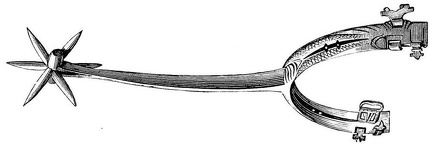 Italian Spur
Italian Spur Jacquemart of Notre-Dame at Dijon
Jacquemart of Notre-Dame at Dijon Jean Sansterre, as represented on his Seal
Jean Sansterre, as represented on his Seal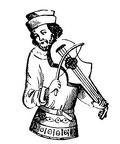 Juggler playing on a Vielle, hollowed out at the Sides. Fifteenth Century
Juggler playing on a Vielle, hollowed out at the Sides. Fifteenth Century Key of the Thirteenth Century, with two Figures of Chimeras, back to back
Key of the Thirteenth Century, with two Figures of Chimeras, back to back Hunting Scene
Hunting Scene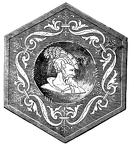 Interior base of a Salt-cellar, executed at Limoges
Interior base of a Salt-cellar, executed at Limoges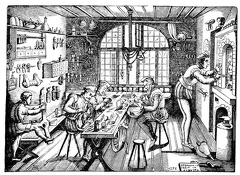 Interior of the Atelier of Etienne Delaulne, a celebrated goldsmith of Paris, in the Sixteenth Century
Interior of the Atelier of Etienne Delaulne, a celebrated goldsmith of Paris, in the Sixteenth Century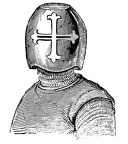 Helmet of Hughes, Vidame of Chalons
Helmet of Hughes, Vidame of Chalons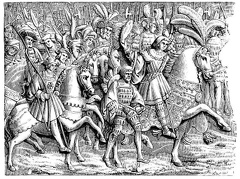 Henry VIII. in the Camp of the Field of the Cloth of Gold (1520)
Henry VIII. in the Camp of the Field of the Cloth of Gold (1520) Horn, or Olifant, Fourteenth Century
Horn, or Olifant, Fourteenth Century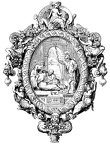 Hand or Pocket Mirror in gold or chased silver
Hand or Pocket Mirror in gold or chased silver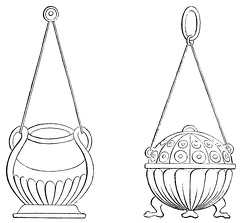 Hanging Lamps of the Ninth Century
Hanging Lamps of the Ninth Century Harp-player of the Fifteenth Century
Harp-player of the Fifteenth Century Harpers of the Twelfth Century
Harpers of the Twelfth Century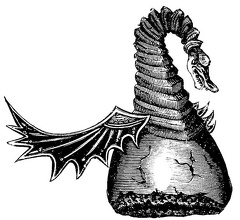 Helmet of Don Jaime el Conquistador
Helmet of Don Jaime el Conquistador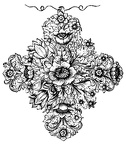 Gold Cross, chased
Gold Cross, chased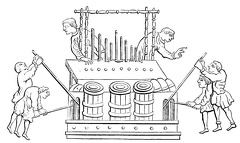 Great Organ, with Bellows and double Key-board, of the Twelfth Century
Great Organ, with Bellows and double Key-board, of the Twelfth Century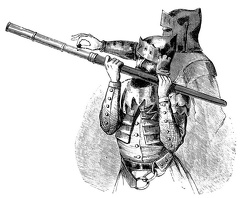 Hand Cannon (or Bâton à feu)
Hand Cannon (or Bâton à feu)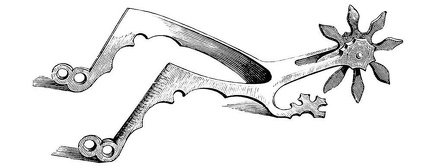 German Spur
German Spur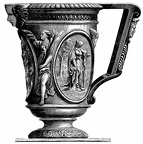 Goblet, by Bernard Paliss
Goblet, by Bernard Paliss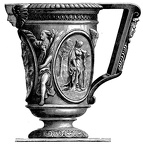 Goblet, by Bernard Palissy
Goblet, by Bernard Palissy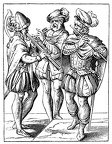 German Musicians playing on the Flute and Goat’s Horn
German Musicians playing on the Flute and Goat’s Horn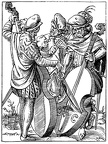 German Musicians playing on the Violin and Bass-Viol
German Musicians playing on the Violin and Bass-Viol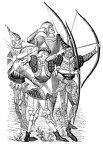 Franc Archers (Fifteenth Century)
Franc Archers (Fifteenth Century)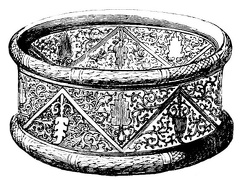 Gallic Bracelet, from a Cabinet of Antiquities
Gallic Bracelet, from a Cabinet of Antiquities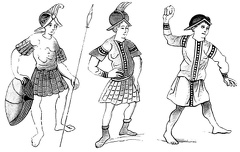 Gallo-Romano Soldiers
Gallo-Romano Soldiers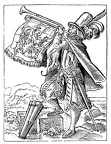 German Musician sounding the Military Trumpet
German Musician sounding the Military Trumpet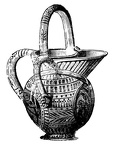 Four-handled Water-jug
Four-handled Water-jug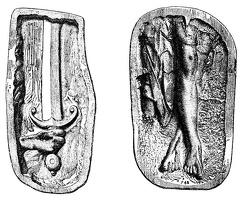 Fragments of Figures on which the moulds have been found in one of Palissy’s Ovens at the Tuileries
Fragments of Figures on which the moulds have been found in one of Palissy’s Ovens at the Tuileries Escutcheon in Silver-gilt, executed by Corneille de Bonte, in the Fifteenth Century
Escutcheon in Silver-gilt, executed by Corneille de Bonte, in the Fifteenth Century



